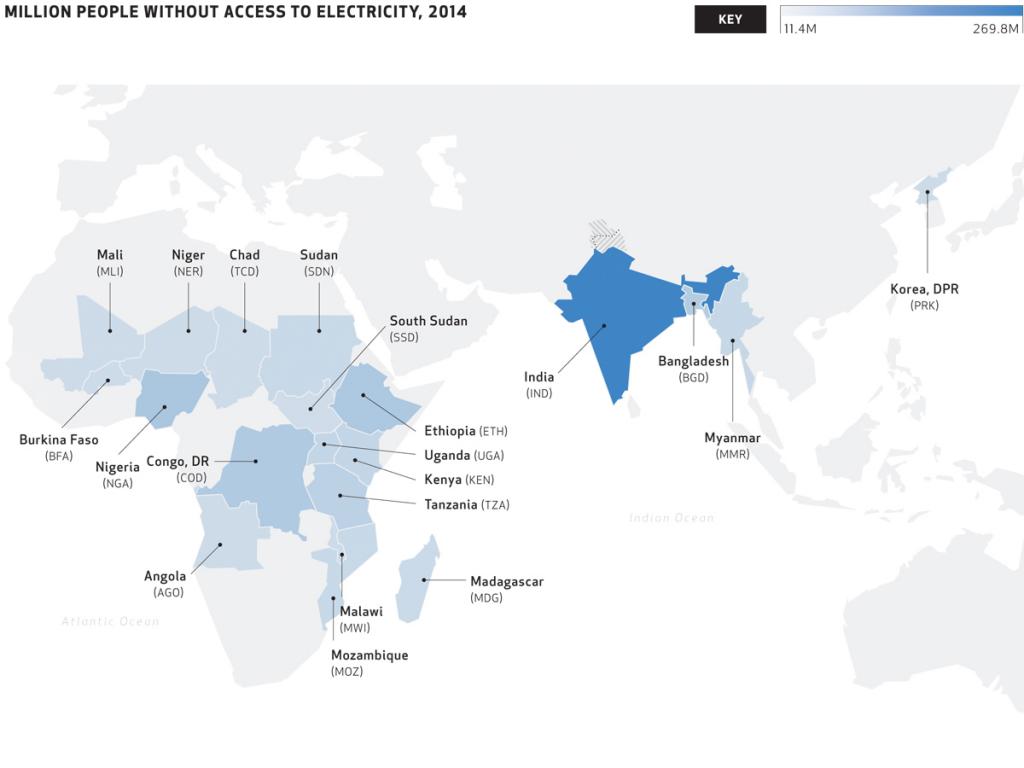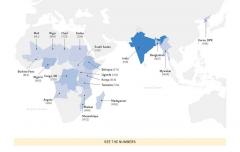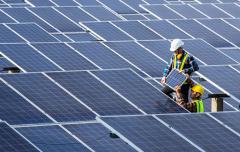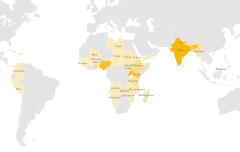Electrification


SEE THE NUMBERS
Quick facts
Context
- In 2014, 80 percent of people without access to electricity were living in just 20 high impact countries, all of them in Sub- Saharan Africa and Asia. Most of those living without access reside in rural areas across the world, with urban areas already having close to universal access at 96 percent.
- In Sub-Saharan Africa, progress in closing the electricity access gap is not keeping pace with population growth in urban and rural areas. Under the 2016 World Energy Outlook’s New Policy Scenario around 780 million people are projected to remain without electricity in 2030, increasingly concentrated in Sub-Saharan Africa (80 percent).
- Electrification rates rise very steeply as countries move through the income bracket of $500-$1,000 per capita GDP.
- By embracing new integrated approaches to electricity access, swift progress can be achieved in reducing energy poverty and closing the energy access gap cleanly and resiliently. Advancements in technologies, business models and new pools of finance mean countries can access decentralized renewable energy solutions that are cleaner and more affordable than ever before.
- Reaching universal energy access at tier 5 (full grid power, all day, every day) by 2030 would require a five-fold increase in finance, to approximately $50 billion annually.
NOTES: 1. The dotted line represents approximately the Line of Control in Jammu and Kashmir by India and Pakistan. The final status of Jammu and Kashmir has not yet been agreed upon by the parties.
2. This map was produced by SEforALL. It is based on the UN Map of the World, which can be found here: http://www.un.org/Depts/Cartographic/map/profile/world.pdf. The boundaries, colors, denominations and any other information shown on this map do not imply, on the part of SEforALL, any judgment on the legal status of any territory or any endorsement or acceptance of such boundaries.
SOURCES: International Energy Agency (IEA) and the World Bank. 2017. “Progress Towards Sustainable Energy: Global Tracking Framework 2017” (April), World Bank, Washington, DC. Data extracted from http://gtf.esmap.org/ on 06/20/2017.DC.




